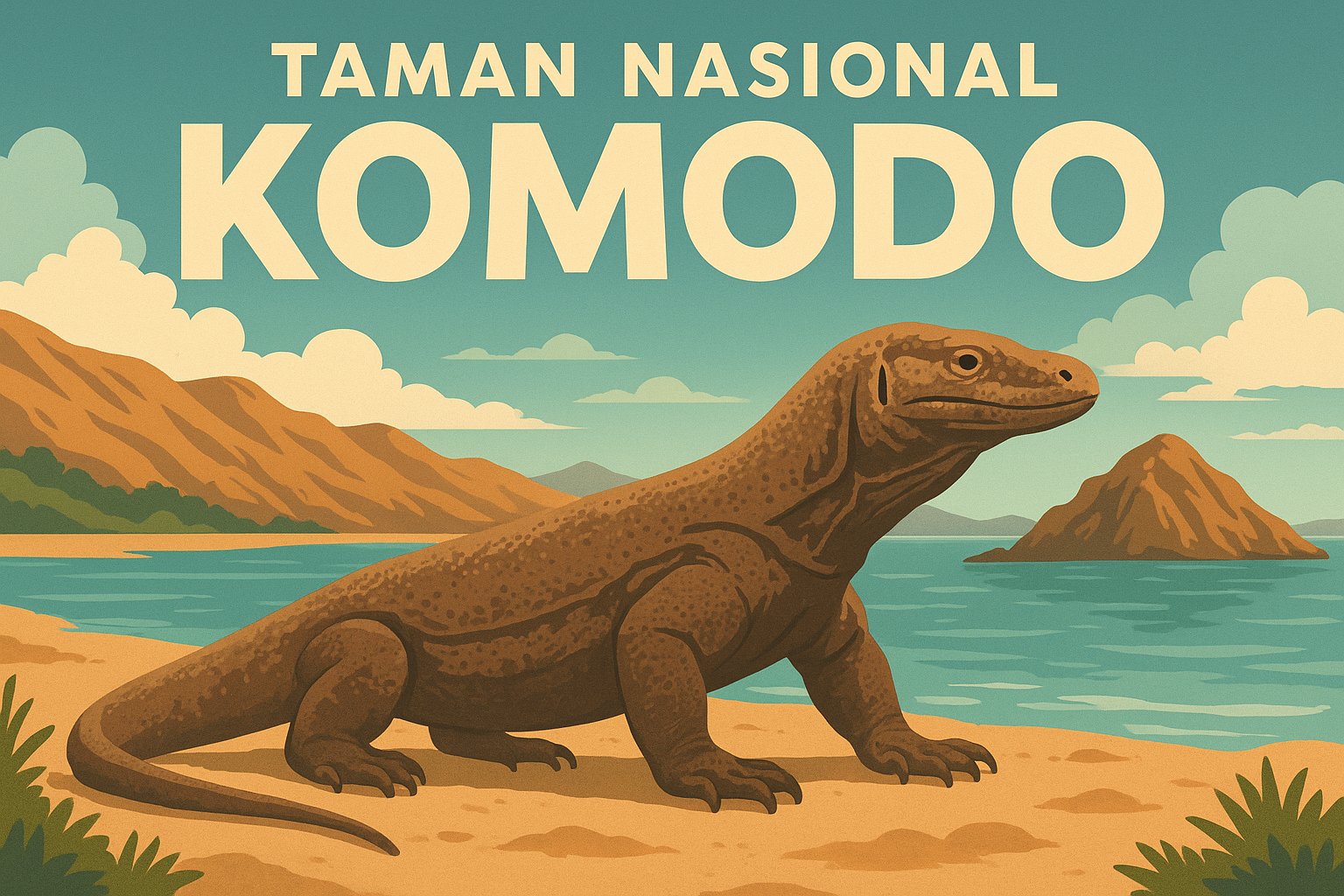Komodo National Park: A Complete Travel and Conservation Guide
Komodo National Park, located in the heart of Indonesia, is one of the most fascinating destinations in the world. Recognized as a UNESCO World Heritage Site in 1991, it is famous for being the only natural habitat of the legendary Komodo dragon, the largest living lizard on Earth. Beyond these prehistoric reptiles, the park is a paradise of biodiversity, housing pristine beaches, vibrant coral reefs, rugged volcanic islands, and unique cultures.
This article provides a comprehensive guide to Komodo National Park, covering its history, wildlife, cultural significance, travel tips, and ongoing conservation efforts. Whether you are a nature enthusiast, diver, photographer, or simply an adventurer, this national park offers an unforgettable experience.
The Origins of Komodo National Park
Komodo National Park was established in 1980 to protect the endangered Komodo dragon (Varanus komodoensis). Later, its conservation goals expanded to preserve the rich marine and terrestrial biodiversity of the area. The park covers more than 1,800 square kilometers, including three major islands — Komodo, Rinca, and Padar — as well as numerous smaller islets surrounded by the Flores Sea.
In 1991, UNESCO recognized the park as a World Heritage Site and Man and Biosphere Reserve, highlighting its global importance. Today, it serves as a living laboratory for scientists and a premier ecotourism destination.
The Legendary Komodo Dragons
The star residents of the park are undoubtedly the Komodo dragons. These ancient reptiles can grow up to 3 meters in length and weigh more than 70 kilograms. Known for their powerful tails, sharp claws, and venomous bite, Komodo dragons are apex predators.
Fascinating Facts About Komodo Dragons
- Hunting skills: Komodo dragons use stealth and patience, ambushing deer, wild boar, and even water buffalo.
- Venomous bite: Contrary to earlier beliefs about toxic bacteria, recent studies reveal they have venom glands that lower blood pressure and cause shock in prey.
- Survival strategy: These reptiles can survive on just a few meals per month, making them highly resilient.
- Unique reproduction: Female Komodo dragons can reproduce through both sexual and asexual means (parthenogenesis).
Encountering these creatures in their natural habitat is a thrilling experience, but strict guidelines ensure both visitor safety and animal protection.
The Islands of Komodo National Park
Each island within the park offers a unique charm:
Komodo Island
The largest and most famous island, home to hundreds of Komodo dragons. Visitors can trek through guided trails to spot dragons, deer, wild boar, and exotic birds.
Rinca Island
Known for having a higher density of Komodo dragons, Rinca provides a wilder and less crowded experience. Its landscapes are dotted with savannahs and mangroves, ideal for photography.
Padar Island
Famous for its iconic viewpoint where three beaches of different colors — white, pink, and black sand — meet in a single panorama. Hiking to the top at sunrise or sunset offers one of the most breathtaking views in Indonesia.
Small Islands
Numerous smaller islands, such as Gili Lawa and Kanawa, are popular for diving, snorkeling, and relaxing escapes.
Marine Paradise: Diving and Snorkeling
Komodo National Park is not only about dragons. Its surrounding seas are among the richest marine environments in the world. Located within the Coral Triangle, the park hosts over 260 species of reef-building coral, 1,000 species of fish, dolphins, manta rays, sea turtles, and even whales.
Best Dive Sites in Komodo National Park
- Batu Bolong: A pinnacle dive site with strong currents and extraordinary biodiversity.
- Manta Point: Where divers can encounter graceful manta rays year-round.
- Castle Rock & Crystal Rock: Known for pelagic fish, sharks, and dramatic underwater landscapes.
- Pink Beach: Famous for its unique rose-colored sand and excellent snorkeling conditions.
These experiences make the park one of the top diving destinations on the planet.
Local Culture and Communities
Beyond nature, Komodo National Park is home to communities with deep cultural roots. The Ata Modo people, believed to be descendants of dragon worshippers, have coexisted with Komodo dragons for centuries. They maintain traditions such as weaving, fishing, and storytelling.
Visitors can also explore nearby towns like Labuan Bajo, the gateway to Komodo National Park. Once a small fishing village, it has now transformed into a vibrant hub with hotels, restaurants, and tour operators.
Responsible Tourism and Conservation
Tourism is vital for the park’s economy but also presents challenges. Over-tourism, plastic waste, and poaching threaten its fragile ecosystem. The Indonesian government, local communities, and international organizations work together to protect the park through:
- Strict visitor regulations to minimize disturbances.
- Community-based tourism projects providing income for locals.
- Marine patrols to prevent illegal fishing.
- Habitat restoration programs for coral reefs and mangroves.
By practicing responsible tourism, visitors can contribute to the preservation of this natural wonder.
How to Visit Komodo National Park
Getting There
Most visitors fly into Labuan Bajo Airport (Komodo Airport) in Flores. From there, boats and tours are available to reach the islands.
Best Time to Visit
- Dry season (April–December): Ideal for trekking, diving, and sightseeing.
- Rainy season (January–March): Fewer tourists, but some tours may be limited.
Travel Tips
- Always go with certified guides for safety.
- Wear comfortable shoes for trekking.
- Bring eco-friendly sunscreen to protect marine life.
- Respect wildlife — never feed or provoke Komodo dragons.
Future of Komodo National Park
As climate change and human activities impact ecosystems worldwide, Komodo National Park faces ongoing challenges. Yet, with growing awareness and sustainable initiatives, its future looks promising. By balancing conservation and tourism, Indonesia ensures that both people and nature benefit.
The park remains a beacon of natural heritage — a place where prehistoric creatures roam freely, corals bloom beneath turquoise waters, and traditions thrive alongside modern tourism.
Conclusion
Komodo National Park is far more than a tourist destination; it is a symbol of Indonesia’s extraordinary biodiversity and cultural richness. From the mighty Komodo dragons to its stunning marine ecosystems, every corner of the park offers discovery and inspiration.
Visiting this national treasure is a privilege that comes with responsibility. By traveling mindfully, respecting the environment, and supporting local communities, every visitor can help preserve Komodo National Park for future generations.



